 Your new post is loading...
 Your new post is loading...
I can remember just a year ago when, by chance, I found myself having a conversation with a woman affiliated with the United Nations. I began to open up to her about my vision for reimagining higher education. I recognized there wasn’t anything logical about why she should be interested in my idea. I didn’t have much to show for it like a fancy website, sponsors or a big social media presence, but I did have one thing that set me apart—passion. I was able to convey my “why” behind my project, the burning need I felt for the education system to expand its horizons to prepare students for nontraditional career paths. She was immediately enrolled, and on the spot she invited me to present my idea to the UN in 3 weeks.
Via The Learning Factor
Want to Make Your Presentation Memorable? Do These 5 Things Want people who hear you speak to remember you long after your presentation is over? Follow my top five rules for success. You're standing at a podium. In front of you is a crowd of friends, peers, and co-workers. Sitting. Staring at you. Your presentation is about to begin. Will your presentation wow the crowd? Or will your presentation be background noise for attendees as they look at their smartphones and laptops?
Via The Learning Factor
It’s helpful to be honest about why you’re reaching out (for example, you’re going through a job search or moving to a new city). It can combat nerves and help the process feel more genuine. In other words, it instantly solves two core issues many people stress about when told to network. That said, as with anything else, you know there’s a difference between being straightforward and being overly blunt. For example, you know to write, "I was thinking of approaching the project from a different angle" over "I hate all of your ideas." Aspiring to find this balance, many people begin networking emails with "Remember me?" or even, "You probably don’t remember me..." After all, why not begin with an honest admission so the other person knows you aren’t being fake? Well, unfortunately, this approach often backfires. While you’re coming from a sincere place, it’s pretty audacious to ask for something from someone whom you’re blatantly admitting you barely know.
Via The Learning Factor
What makes big decisions so hard? As a decision coach, I see many people struggle with tough choices, because they really, really want to have no regrets. While I’ve never met anyone who felt they got it right 100% of the time, going back to the basics can help you get clear on what you want and feel better about moving forward. Here are five simple strategies I’ve learned for lessening the odds that you’ll look back and wish you did it differently.
Via The Learning Factor
Even as neuroscientists continue to unearth new discoveries about the human brain, some of the most effective brain hacks have been around for years. Take Blaise Pascal, for example, born in 1623. The 17th-century French philosopher, mathematician, and physicist explored human nature in his book of essays Pensées. Brain Pickings sheds light on his stance on the art of persuasion: "Pascal came to see that the surest way of defeating the erroneous views of others is not by bombarding the bastion of their self-righteousness but by slipping in through the backdoor of their beliefs." If you want to get someone to change their mind, you might be tempted to immediately start the discussion with talking points about why they're wrong. Pascal recommended a different approach. Start in their camp instead. Cozy up to what this person already believes, and admit there's truth in what they believe. Then, present the larger picture -- in which other angles and approaches exist. This approach is meant to lead someone into discovering another perspective or angle on their own. Instead of you doing the persuading, you're setting them up to persuade themselves.
Via The Learning Factor
Consider a delinquent taxpayer who receives one of the following two letters in the mail: Letter 1: We are writing to inform you that we have still not received your tax payment of $5,000. It is imperative that you contact us. Letter 2: We are writing to inform you that we have still not received your tax payment of $5,000. By now, 9 out of 10 people in your town have paid their taxes. It is imperative that you contact us.
Via The Learning Factor
"Calculators have come a long way since the first ones that could add, subtract, multiply, and divide. Now, for a modest cost, it’s possible to purchase a graphing calculator. Or, with your computer, you can put a free one in your browser."
Via Beth Dichter
"Teachers are the arbitrators of knowledge and culture. Knowledge and culture are each dynamic, endlessly crashing and churning. This makes teaching significantly important and difficult work, and can leave teaching—as a craft—wide-eyed and nonplussed in response. Worse, those outside the bubble of education can understandably struggle to understand the problem. What are the teaching in those schools anyway? How is it any different from when I was in school?"
Via Beth Dichter
We'll reach a new state of web skills when we reinvent technology tools to better enhance our personal learning. We'll be at 3.0 when schools are everywhere and not viewed as daycare.
Via Beth Dichter
Richard Culatta is with the US Department of Education at the Office of Educational Technology. He is an exceptional speaker and a “smart cookie”, I dig his self-deprecating style. He k...
Via Dr. Susan Bainbridge
|
Want to Make Your Presentation Memorable? Do These 5 Things Want people who hear you speak to remember you long after your presentation is over? Follow my top five rules for success. You're standing at a podium. In front of you is a crowd of friends, peers, and co-workers. Sitting. Staring at you. Your presentation is about to begin. Will your presentation wow the crowd? Or will your presentation be background noise for attendees as they look at their smartphones and laptops?
Via The Learning Factor, Rosário Durão
There are few occasions where having high emotional intelligence (EQ) comes in handy more than when you disagree with your boss. But it's hardly the only one. Many of us would even happily trade off a few IQ points in exchange for some extra EQ. In fact, people with very high IQs but lower emotional intelligence may be more likely to upset their bosses by focusing too much on the logical side of an argument while ignoring the social and emotional dimensions. In fact, the most effective approach to disagreeing with your manager should really be based on EQ rather than IQ. Unsurprisingly, research suggests that employees with higher emotional intelligence are generally more rewarding to deal with, which is why they're more often promoted than those who aren't. In a world that still bases so many crucial career decisions on a single subjective factor in the eyes of one's direct manager, likability often trumps ability and work ethic.
Via The Learning Factor
What makes big decisions so hard? As a decision coach, I see many people struggle with tough choices, because they really, really want to have no regrets. While I’ve never met anyone who felt they got it right 100% of the time, going back to the basics can help you get clear on what you want and feel better about moving forward. Here are five simple strategies I’ve learned for lessening the odds that you’ll look back and wish you did it differently.
Via The Learning Factor, Rosário Durão
Emotions play an active role in almost all of our decision making. That's one reason why emotional intelligence, the ability to identify, understand, and manage those emotions, is such an invaluable skill. But how specifically does emotional intelligence help us with our daily tasks? Here are three tips to make sure your next presentation is emotionally intelligent: 1. Don't get anxious. Get excited. All of us get nervous before a presentation, even if we've done it hundreds of times. So take that nervousness and turn it into something positive: enthusiasm.How do you do that exactly? Spend those final few moments reviewing your favorite parts of the presentation. Remind yourself why you're doing this, and focus on the value you have to deliver to your listeners. Now, take that enthusiasm and give a talk that you passionately believe in.
Via The Learning Factor
You’d probably be lying to yourself if you said you’ve never gone into a new job and resolved to outperform your team’s expectations. You have plenty of good ideas and want everyone to know that you’re a genius of sorts. Most of the time, that mind-set’s great for your career—it pushes you to be your best day in and day out. But the problem is that some people think that motivating themselves this way gives them permission to push their teammates around. While your company hired you because you bring something unique to the table, that doesn’t give you license to be condescending about it. So if you want to convince your coworkers that you perform above your pay grade, here are a few mind-sets you should adopt ASAP.
Via The Learning Factor
This infographic outlines the learning theory pioneered by George Siemens and Stephen Downes.
Via Beth Dichter
"I have been working on a tool for students to do a self assessment/reflection and feedback...The tool is based around the work of Stephen Dinham which is used be DET NSW and New Zealand eductors John Hattie & Helen Timperley."
Via Beth Dichter
"Critical thought is a cognitive process that proposes the systematic analysis of information, opinion and statements that we accept in our daily life as valid or true. It is a basic skill for a competent, free and responsible citizen."
Via Beth Dichter
Cultures of Thinking: Six Principles
1. Skills are not sufficient; we must also have the disposition to use them.
Possessing thinking skills and abilities alone is insufficient for good thinking. One
must also have the disposition to use those abilities. This means schools must
develop students’ inclination to think and awareness of occasions for thinking as
well as their thinking skills and abilities. Having a disposition toward thinking
enhances the likelihood that one can effectively use one’s abilities in new
situations.
2. The development of thinking and understanding is fundamentally a social
endeavor, taking place in a cultural context and occurring within the constant
interplay between the group and the individual. Social situations that provide
experience in communicating oneʼs own thinking as well as opportunities to
understand othersʼ thinking enhance individual thinking.
3. The culture of the classroom teaches. It not only sets a tone for learning, but
also determines what gets learned. The messages sent through the culture of the
classroom communicate to students what it means to think and learn well. These
messages are a curriculum in themselves, teaching students how to learn and
ways of thinking.
4. As educators, we must strive to make students thinking visible. It is only by
making thinking visible that we can begin to understand both what and how our
students are learning. Under normal conditions, a studentʼs thinking is invisible to
other students, the teacher, and even to him/herself, because people often think
with little awareness of how they think. By using structures, routines, probing
questions, and documentation we can make studentsʼ thinking more visible toward
fostering better thinking and learning.
5. Good thinking utilizes a variety of resources and is facilitated by the use of
external tools to “download” or “distribute” oneʼs thinking. Papers, logs,
computers, conversation, and various means of recording and keeping track of
ideas and thoughts free the mind up to engage in new and deeper thinking.
6. For classrooms to be cultures of thinking for students, schools must be
cultures of thinking for teachers. The development of a professional community
in which deep and rich discussions of teaching, learning, and thinking are a
fundamental part of teachersʼ ongoing experience provides the foundation for
nurturing studentsʼ thinking and learning.
Via Mary Perfitt-Nelson, Grant Montgomery
|



 Your new post is loading...
Your new post is loading...













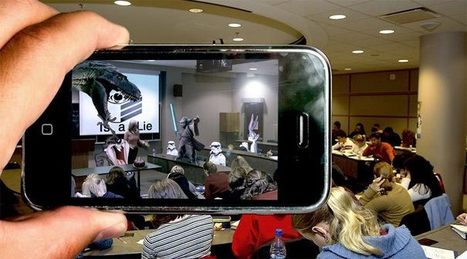

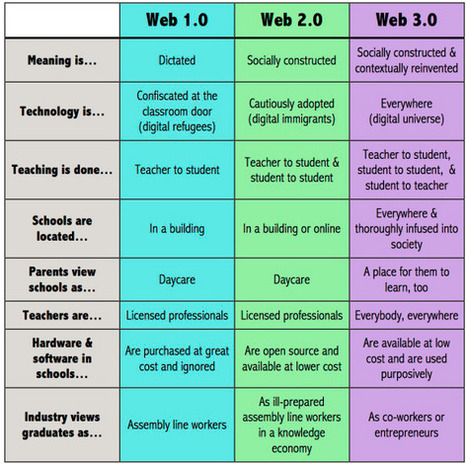


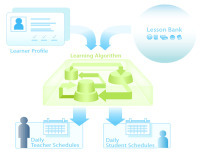






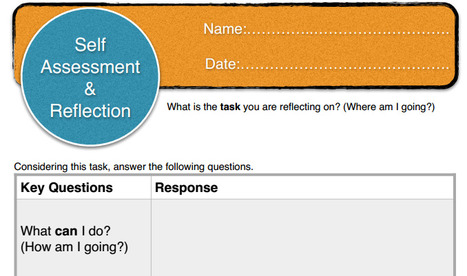

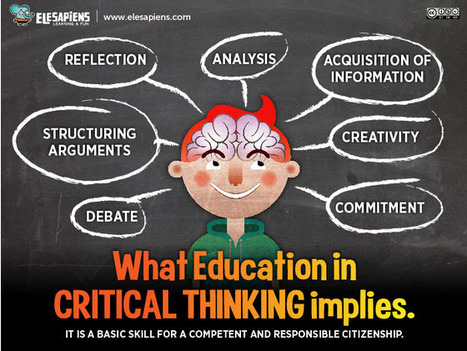


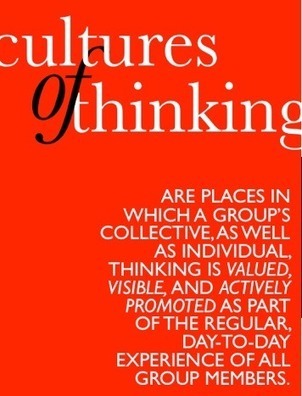





The classic 60-second elevator pitch in which you share "what" you do is outdated and ineffective. Learn how to craft a pitch that will instantly enroll others by sharing your "why" instead.
Delivering the why is most important today in sales and leading sales people ...